All You Need to Know About Hiking the Inca Trail to Machu Picchu

Inca Trail to Machu Picchu is an experience of a lifetime. This guide tells you everything you need to know about the 4 day 3 night Inca Trail to visit Machu Picchu, one of the seven wonders of the world.
Nestled amidst the breathtaking beauty of the Peruvian Andes lies the Inca Trail, an iconic trek that is once part of a powerful ancient civilization.
The Inca Trail winds its way through rugged mountains, cloud forests, and mystical ruins, offering an unparalleled adventure to those seeking to uncover the once powerful Inca Empire. At the end of the famous Inca Trail is Machu Picchu, one of the seven wonders of the world.
When I first found out about Machu Picchu, I was 100% sure I was going to take the train up; hiking never even crossed my mind. Years later, I somehow decided it would be cool to trek the Inca Trail to Machu Picchu.
Whether you are iffy about doing the Inca Trail or you already decided to do it, you will find this detailed Inca Trail guide useful to help you set your expectations (or decide if you want to do it or not).
This detailed Inca Trail guide will tell you information about the different types of Inca Trail, how to book a Inca Trail trek, what to bring with you, what you will eat and drink on the Inca Trail and ultimately my personal experience hiking the 4 day 3 Night Inca Trail.
This blog contains occasional affiliate links, where I receive a small commission on sales of the products/hotels that are linked at no additional cost to you. In addition, as an Amazon Associate, I earn from qualifying purchases.
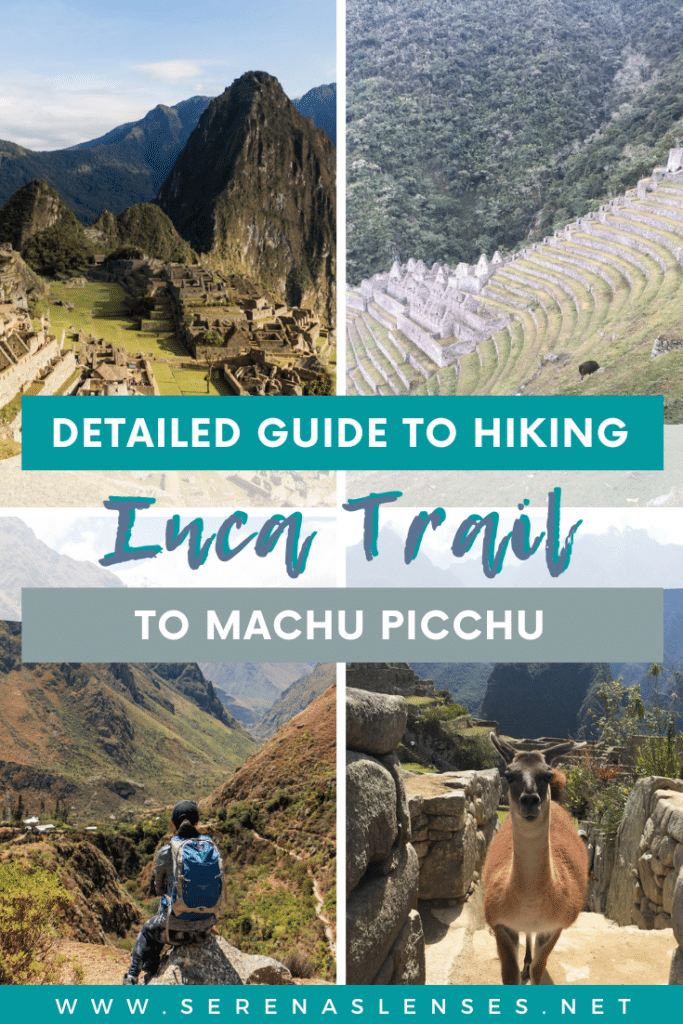
What is the Inca Trail and why is the Inca Trail important?
Most people know that Machu Picchu is one of the seven wonders of the world but few people know the history behind Machu Picchu or the history of the Incas.
The Inca Empire is not the only empire that existed throughout history in this region but it is the largest and the most well known.
The Inca people were extremely intelligent and developed various technology such as experimenting with man-made terraces for the best crops. They were sophisticated and their political, commercial and military center was based in Cusco, Peru.
The Inca Empire was not only in Peru but expanded to Ecuador, Chile, part of Bolivia, Argentina and Colombia.
Machu Picchu was one of the complexes built during the Inca time in the 15th century and it was said to be the emperor’s estate. The Inca people built large network of roads connecting to different parts of the region and the Inca Trail was one of such roads built.
When the Spanish invaded South America in the 1500s, the Inca people fought back but they were not able to defeat the Spanish. Smallpox spread from state to state and had a devastating effect on the Inca Empire.
As the Spanish conquered, they destroyed numerous Inca archaeological sites and temples, except a few, and Machu Picchu was one of the few that survived.
How come the Spanish did not destroy Machu Picchu? It’s because they didn’t know it existed. If the Spanish had known about Machu Picchu, it would have been destroyed as well.
It’s only early in the 1900s that American historian Hiram Bingham found Machu Picchu. It was not an easy find for sure because Machu Picchu was only known by the local people during the Spanish invasion and after 400 years, it was extremely difficult to trace down people who would know anything about it.
The Inca Trail (Camino de Inca) to Machu Picchu was part of the transportation network of the Inca Empire.
The Inca Trail is significant because it was used by the Inca people for pilgrimage purposes back in the 1500s; so it has strong religious and ceremonial purposes. In recent times, the Inca Trail became popular among hikers as a way to visit Machu Picchu.
How long is the Inca Trail? How long does it take to hike the Inca Trail to Machu Picchu?

The classic Inca Trail, which starts at Kilometer 82 and concludes at Machu Picchu, spans a distance of approximately 43 km (26 miles).
The Inca Trail winds through diverse landscapes, including mountains, cloud forests, and archaeological sites, providing trekkers with an immersive experience in the Andean region of Peru.
The Inca Trail is typically covered over the course of 4 days and 3 nights, with each day involving a certain amount of hiking:
- Day 1: 14 km (8.7 miles)
- Day 2: 16 km (9.9 miles)
- Day 3: 10 km (6.2 miles)
- Day 4: 1.9 km (1.2 miles)
You will also find 5 day 4 night Inca Trail treks that cover the same distance, but with fewer miles hiked per day.
If you see Inca Trails that are 2 days (and 7 days), that generally means they skip some sections of the Inca Trail. Although those are fun too (depending on your preference and fitness level), you will not be able to experience the full Inca Trail experience the ancient Inca people did before.
At the end of the Inca Trail is the majestic ancient city of Machu Picchu. But I guarantee you by the time you get to Machu Picchu you wouldn’t even care as much, since you have already seen other amazing ancient ruins along the way.
Do you need a permit to hike the Inca Trail?
Due to its popularity and heavy traffic, the Inca Trail deteriorated rapidly. The Peruvian government had to find a way to control the number of visitors trekking on the Inca Trail and therefore implemented the permit system for the Inca Trail.
Currently there are only 500 permits a day including both tourists and cooks, staff and guides (about 200 permits for tourists and the rest to supporting staff).
If you do not get the Inca Trail permits, you will not be allowed on the Inca Trail.
If you want to see how many permits are left (or which dates are already sold out), check out the official Inca Trail permits website.

Do you need a guide to hike the Inca Trail to Machu Picchu?
In order to get the Inca Trail permits, you will need to book a hiking tour in order to secure the Inca Trail permits.
You cannot hike the Inca Trail by yourself; you need a licensed guide to trek the Inca Trail with you.
The good thing is there are a number of reputable Inca Trail hiking companies that you can trust to take care of you on the trek. I went with Alpaca Expeditions and had an amazing experience. But other well reviewed and reputable Inca Trail tour operators include G Adventure and Llama Path.
How much does the Inca Trail Cost?
A typical 4D3N Inca Trail to Machu Picchu costs between $750 to $1000 as a starting price. May to August are more expensive than the rest of the year.
The price of Inca Trail tour include:
- Inca Trail Permit
- All meals and snacks on the trail
- Train ticket from Machu Picchu to Cusco on the Expedition Train (see upgraded train detail below)
- Transportation cost from Cusco to Machu Picchu
- Porters and guides
- Entrance Fee to Machu Picchu
What the Inca Trail price does not include:
- Rentals (hiking poles, sleeping bag) from the tour operator
- Tips for Guides and Porters
- Bathroom cost at Machu Picchu
- Huayna Picchu ticket ($75)
- Machu Picchu mountain ($75 and an additional day)
- The Vistadome Train (an upgraded train, $75)
Note if you pay for the 2 day Inca Trail or a private or luxury Inca Trail your price will be different.
What are alternative hikes to Machu Picchu?
Besides hiking the classic Inca Trail to Machu Picchu, there are other routes you can hike to Machu Picchu. Note that you can always take a train or bus to Machu Picchu as a day trip, so that’s not covered by this section.

Salkantay Trek (5 days)
The Salkantay Trek is a more challenging alternative to the Inca Trail.
The trek usually lasts around 5 days and covers a distance of approximately 75 km (47 miles). It is also at a higher altitude than the Inca Trail.
The Salkantay Trek takes you through high-altitude mountain passes, cloud forests, azure lagoons and ancient ruins.
Lares Trek (4 days)
The Lares Trek is a cultural and scenic trek that takes you through the traditional Andean communities of the Lares Valley. This hike takes about 4 days and covers a distance of 33 km (20 miles).
Unlike the Inca Trail and Salkantay Trek, Lares Trek offers you a insight into the local way of life. Along the hike you will visit local villages, meet indigenous Quechua-speaking communities, and observe their traditional customs and textile weaving techniques.
Choquequirao Trek (5 to 6 days)
The Choquequirao Trek is a difficult and less-traveled trek that leads to the archaeological site of Choquequirao. This hike takes between 5-6 days (depending on the route), and covers a distance of 64 km (40 miles).
On the Choquequirao Trek you will be able to visit ruins that are similar to Machu Picchu, but they are much larger!
After you complete Coquequirao Trek, on the last day of the tour you will take a bus up to Machu Picchu.
When is the best time to hike Inca Trail?
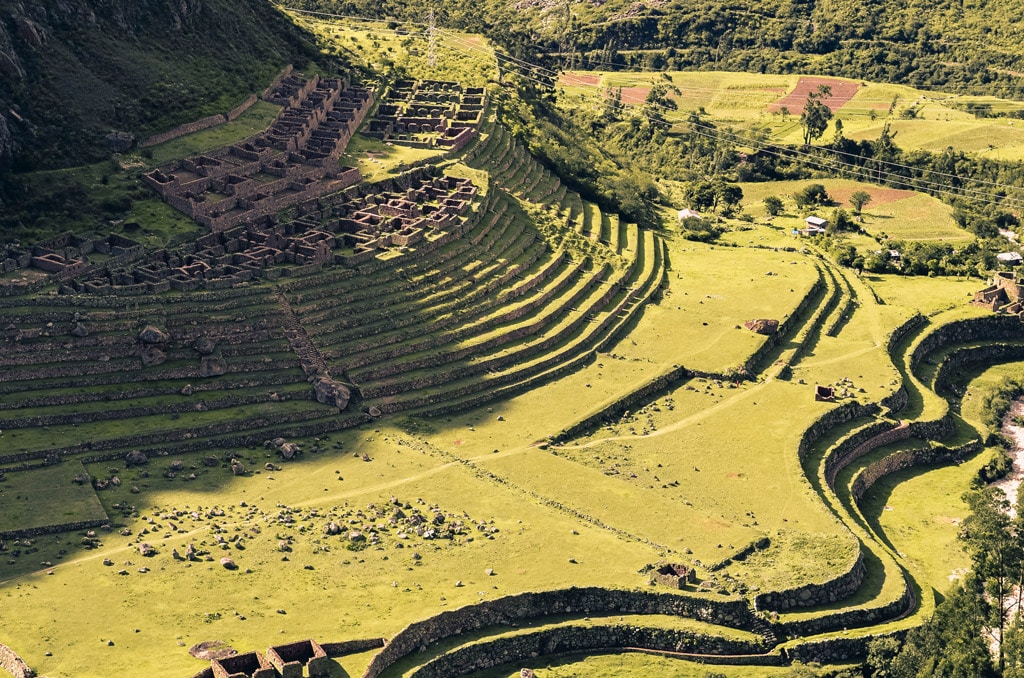
The Inca Trail is located in Peru, near the Cusco Region. Since Peru is in the Southern Hemisphere, the season there is reversed from the US or UK.
There are 2 seasons on the Inca Trail:
- Dry Season (May to September)
- Wet Season (October to April)
Inca Trail is closed the entire February.
As you can imagine, the dry season means less rainfall and more days with clear skies. Most people try to hike Inca Trail during the dry season and the price of the Inca Trail tour is slightly more expensive during these months.
But even during the dry season you could still have rainy days (like we did when we hiked early September), so you should still pack rain gear.
You don’t have to worry about the Inca Trail itself being too crowded during the dry season since there is a 500 person a day limit on the permits. But at Machu Picchu itself you will encounter more people.
Can you get altitude sickness on the Inca Trail to Machu Picchu?
You can get altitude sickness on the Inca Trail to Machu Picchu.
While Machu Picchu itself is not considered in the high altitude zone, part of the Inca Trail can be very high and you can feel the effect of altitude sickness on the trail.
Here are some of the altitude information for the hike:
- Machu Picchu: 2430 meters (7972 ft)
- Dead Woman’s Pass (highest point on the Inca Trail): 4215 meters (13828 ft)
- Cusco: 3400 meters (11155 ft)
- Salkantay Pass (on the Salkantay Trek): 4600 meters (15090 ft)
Lima is at sea level, so as soon as you fly into Cusco you will start to feel the effect of high altitude. You may feel out of breath very quickly and after a while you could feel headache, rapid heart rate, and even nausea.
Everyone will recommend acclimating to the high altitude for a few days before you hike Inca Trail, so your body can get a break and get used to the altitude before starting the cardio “exercise” on the trail.
Many people will tour around Cusco or visit the Sacred Valley to acclimate. Some people may try to do Rainbow Mountain but I advise against doing so because Rainbow Mountain has an even higher altitude and you may actually puke while hiking Rainbow Mountain.
You can get altitude sickness pills and take them a couple of days before arriving at Cusco and continue to take them while you are hiking the Inca Trail.
Even if you are super fit you could still get altitude sickness. Physical fitness does not protect you against altitude sickness.

Other things to know before you hike the Inca Trail to Machu Picchu
You will not be able to shower for 3 days while hiking the Inca Trail. You will be sleeping in a basic tent shared with someone else for 3 nights.
You will not be the first one arriving at Machu Picchu on Day 4; you will arrive around 7:30-8am.
Different tour agencies have slightly different itineraries; some “front loads” the trek so you have longer day 1 and day 2 while other companies may even out the trek slightly more.
Tips are almost mandatory: suggested amount is 150 sol (~50USD)for porters and chef, and 100-150 sol for the guides
Bring extra $300 (USD) in case you need to turn back during the hike due to illness or physical disability. You can turn back during Day 1 and Day 2, but after that there is no turning back and you will need to keep hiking.
My detailed 4 day 3 night classic Inca Trail itinerary and experience
Day 1: Cusco -> Km 82 -> Patallacta -> Ayapata (8.7 miles/ 14 km/ 6-7 hours)
Day 2: Dead Woman’s Pass -> Runcu Raccay -> Chaquiccocha (9.9 miles/ 16 km/ 8 hours)
Day 3: Chaquiccocha -> Cloud Forest -> Wiñay Wayna (6.2 miles/ 10 km/ 5 hours)
Day 4: Sun Gate -> Machu Picchu -> Huaynapicchu (optional) -> Aguas Calientes -> Cusco
Day 0 of 4 Day Inca Trail – Briefing Night
Every company will hold a briefing session the night before the hike. Usually you will get a confirmation email a week or 2 before the trek that tells you what to pack and the time of the briefing. Our briefing of the Inca Trail with Alpaca Expedition started at 7pm the night before the hike.
During the briefing the Alpaca Expedition guides will tell you when the pick up is the next morning and you will also get a duffel bag and a scale so you can pack personal belongings into the bag for porters to carry.
Due to regulation porters can only carry 7kg of your personal belongings for you, this includes 3.5kg of sleeping bag, foam mattress, air mattress, and tent.
So you are really just left with 3.5kg for them to carry. What happens to the rest? Well you will need to carry them in your day pack. It sucks to carry a heavy day pack while hiking at 4000m (13000 ft) so efficient packing is key!
See my detailed Inca Trail Packing Guide.
Day 1 of 4 Day Inca Trail – It Has Its Ups and Downs
Distance: 14km (8.7 miles)
Elevation: 3300m
Day 1 was the start of our 4 day Inca Trail. Our guides Lizandro and Pamela (2 guides because we have 10 people in our group) picked us up from our hotel at 3:30am. After a two hour drive, we reached our breakfast area before the hike.
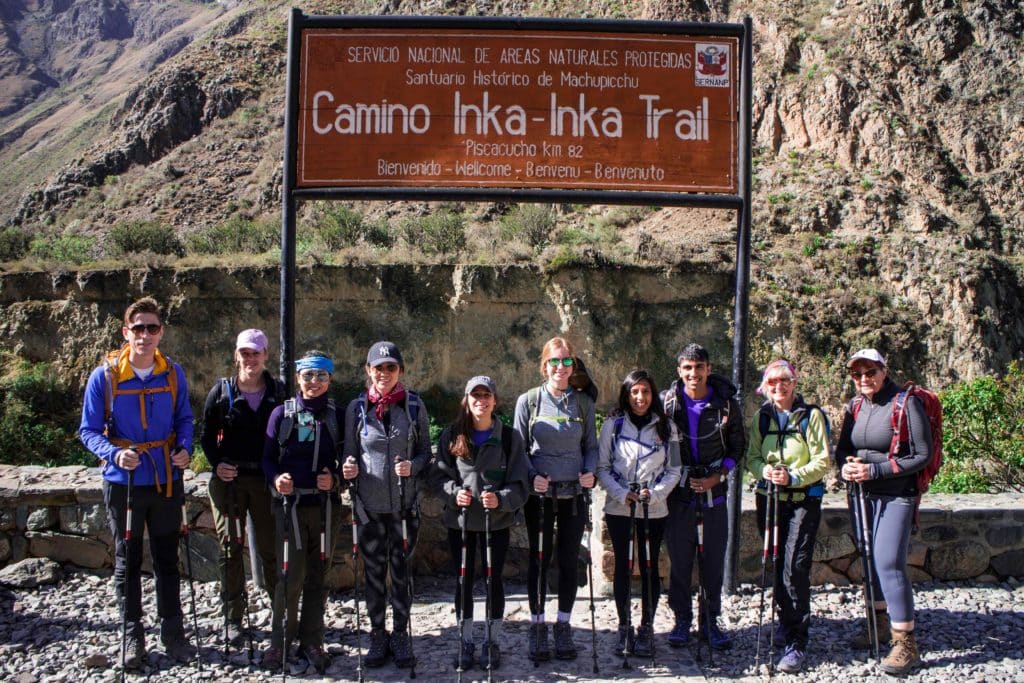
We also got our Inca Trail permits from the office and passport checked and stamped and officially started our hike! Note: when you book the 4 day 3 night Inca Trail with Alpaca Expedition (or other companies) they will secure the permits for you.
You must bring your passport with you on the Inca Trail and be sure to have it in your daypack.
Sunny weather and flat trail, together with excitement for the trek, made Day 1 of our 4 day Inca Trail trek a very easy hike…until the last 1.5 hours where we started going uphill (pretty much uphill after lunch).
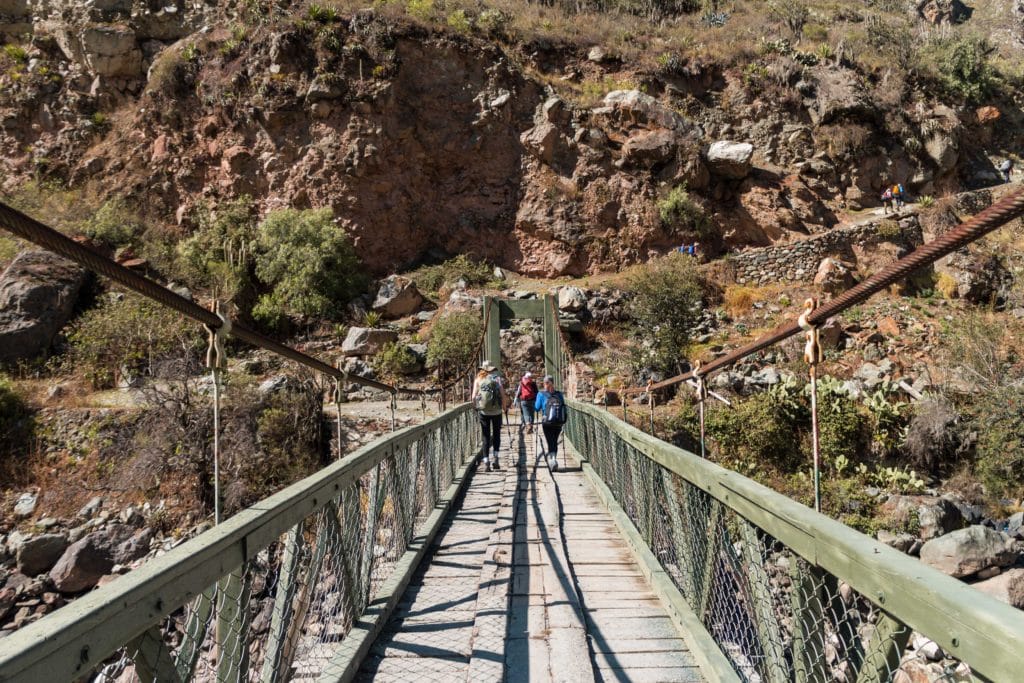
Suddenly the hike was not so easy anymore and everyone had a taste of what’s to come on Day 2.

The scenery of our Inca Trail trek during Day 1 also changed from hiking next to a river with views of snow capped mountains to hiking uphill in the woods. During the first day you also come across many villages along the way so bathrooms will be available.


Since it was our first day trekking the Inca Trail, we were all curious on the type of food and tents we were going to get!
Alpaca Expedition did a good job with stuffing us with multi-course meals everyday (salad, soup, rice/noodle, meat, veggies, etc).
We had two vegetarians in our group and the chefs took extra care to provide them with good Vegetarian options.


Water was boiled then cooled down at every meal so we didn’t have to worry about bringing our own water to the Inca Trail.
Beverages during the Inca Trail generally included different types of tea, instant coffee and hot chocolate. Due to the weight limit, there was no soda or juice available on the trek.
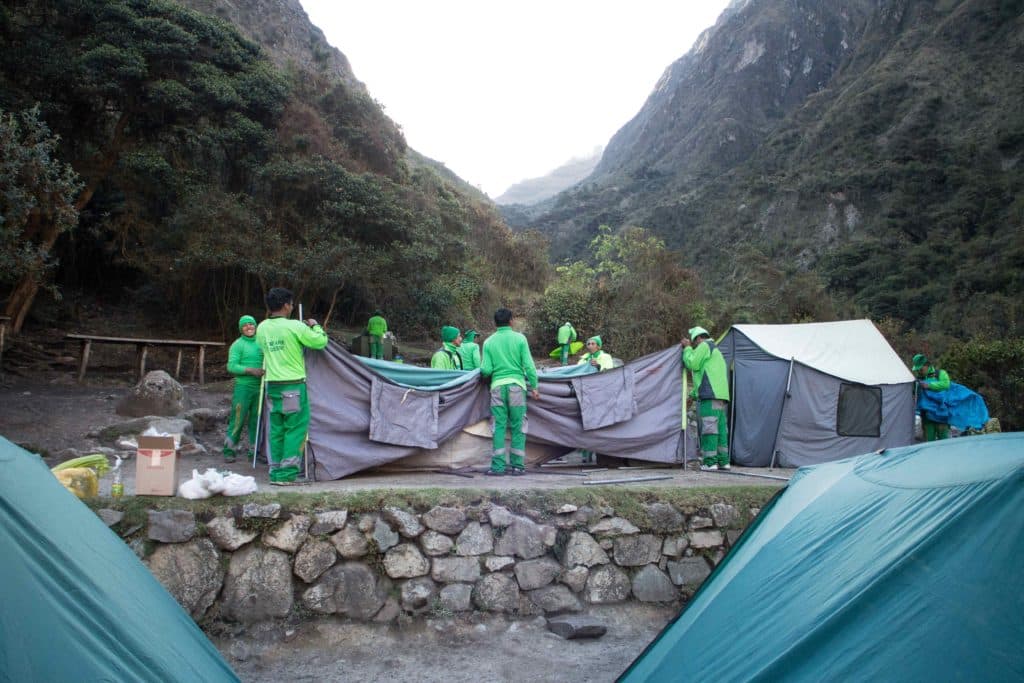
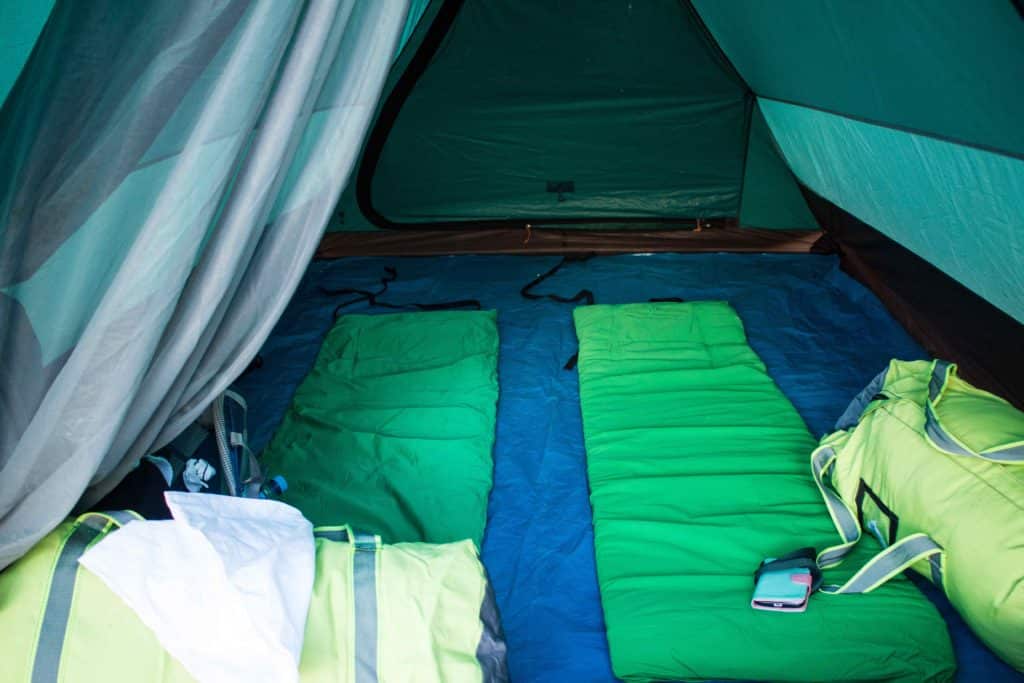
Our tent was more than spacious for two people. What I really enjoyed was the fact they give us hot water to wash our hands/face when we get to camp after a long day.
The porters also set up a portable toilet in a tent so you get the privacy you need and not have to go into the woods.
Day 1 is probably the warmest day of the hike. It was sunny and hot the entire time; most people in my group wore T-shirts, so bring lots of sunscreen! The weather will change drastically during Day 2.
Day 2 of 4 Day Inca Trail – What Goes Up Must Come Down
Distance: 16km (10 miles)
Elevation: 4200m on top of Dead Woman’s Pass; 3600m at camp
Everyone had warned me about Day 2 of the Inca Trail and oh boy everything they said about Day 2 was true. It was a true test of both mental and physical strength and determination.
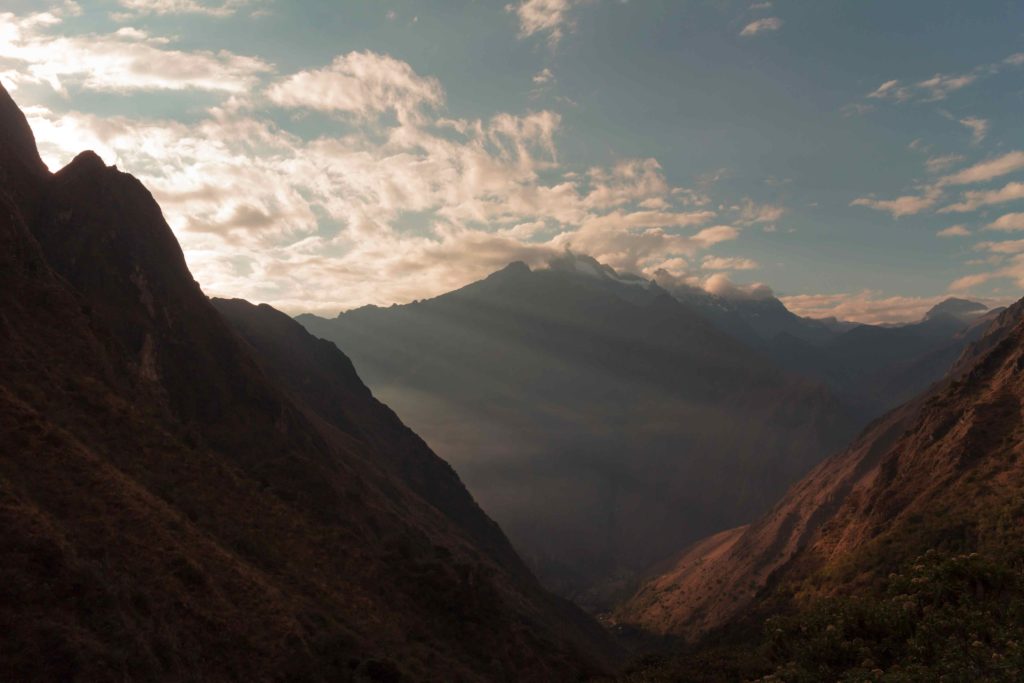
We were woken up at 4:30am to get ready for breakfast at 5:10am and leave by 5:30am. It was a day of hiking up and down two mountains both at 4000m+.
We hiked for about 3-4 hours in the morning to the top of Dead Woman’s Pass, the highest point of Inca Trail. The hike to Dead Woman’s Pass was a slow and painful ascend due to the thin air and rainy weather.
Having conquered Dead Woman’s Pass is probably the biggest accomplishment on the trek. The mountain is named that way because the hills look like a woman lying down facing up with two breasts. Don’t worry, nobody died there.

We explored a few ruins along the way during Day 2 of Inca Trail. These are ruins that nobody else will ever get to see unless they do the Inca Trail.
Little did I know that it was going to start raining and that made downhill extremely slippery and hard. I actually slipped and fell and injured my arm the first 20 min of downhill. Good thing our guides had band-aid and pain killers with them and literally walked down with me to the bottom of the mountain.
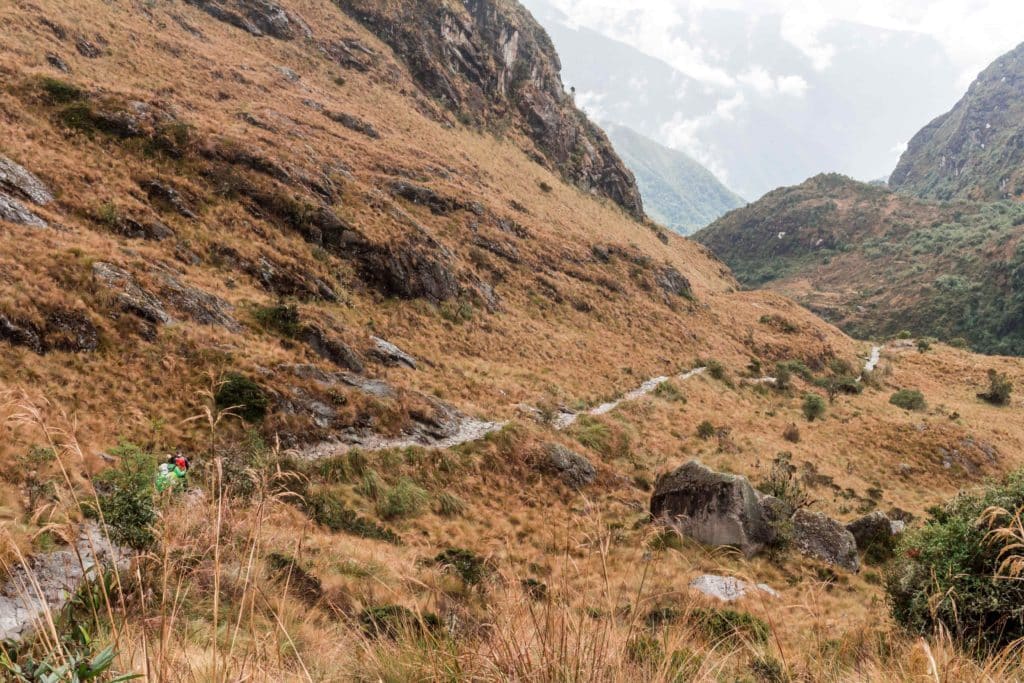
Lunch never felt so good after 3 hours of uphill and 2 hours of downhill during the journey to Dead Woman’s Pass. However, that was only half way to our camp. We had to hike up another really steep hill for 1.5 hours after lunch, rest, then hike 1.5 hours down in the rain.

During the second part of the day we briefly stopped by the ruin Runcu Raccay,

The elevation during Day 2 of the Inca Trail making hiking uphill extremely difficult as we struggled to breathe, but going downhill was equally challenging due to the slippery rocks and steep steps. I don’t think I’ve been so happy in my life to finish a day hike and get the warm welcome by our porters back at camp!
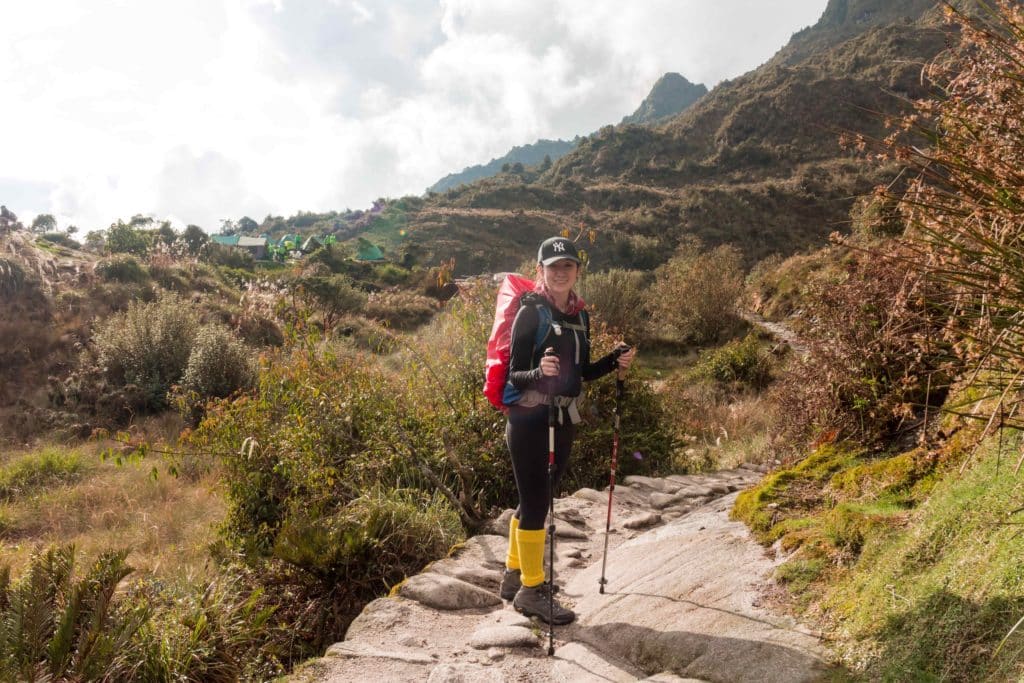
Since we were so high up in the mountain, it became extremely cold at night. Good thing our sleeping bags from Alpaca Expedition were really warm but I still went to bed with 2 layers!
Make sure to bring a hat and scarf and gloves with you to stay warm. Fortunately the sky cleared up at night and we were able to see a million stars from our camp.
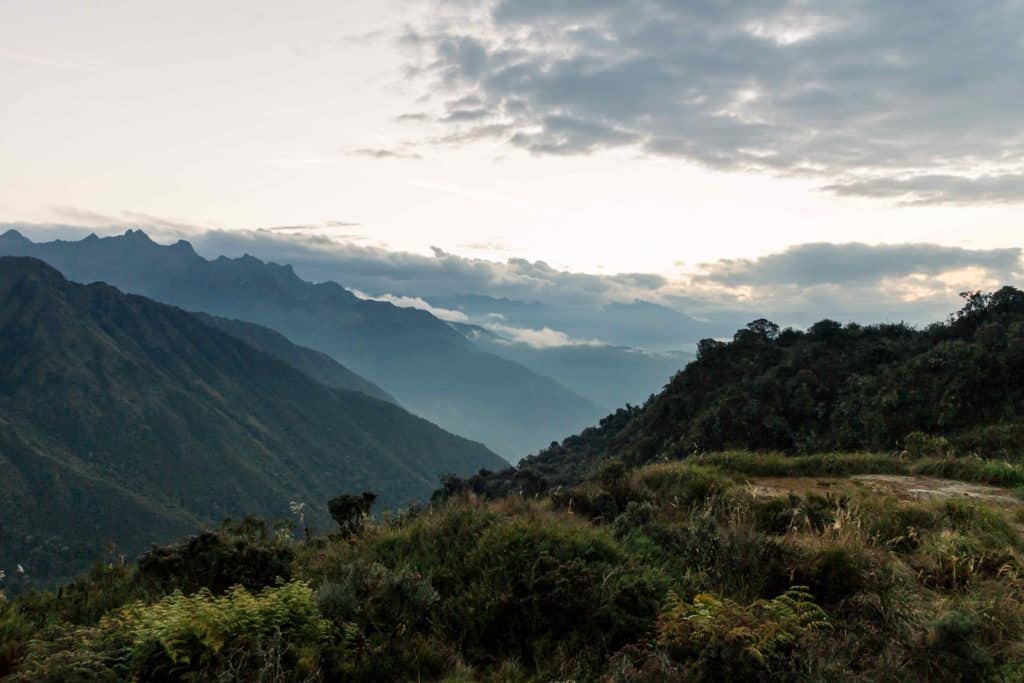
Day 3 of 4 Day Inca Trail – Downhill
Distance: 10km (6.2 miles)
Elevation: 2600m
After Day 2 of Inca Trail we felt like we could do anything.
The start of Day 3 on the Inca Trail trek was another uphill hike for about an hour before we started heading downhill for 3 hours till lunch (as well as our camp).
Unfortunately it rained for the most part so we couldn’t see the view of the “cloud forest“, but I can imagine it must be beautiful on a sunny day.
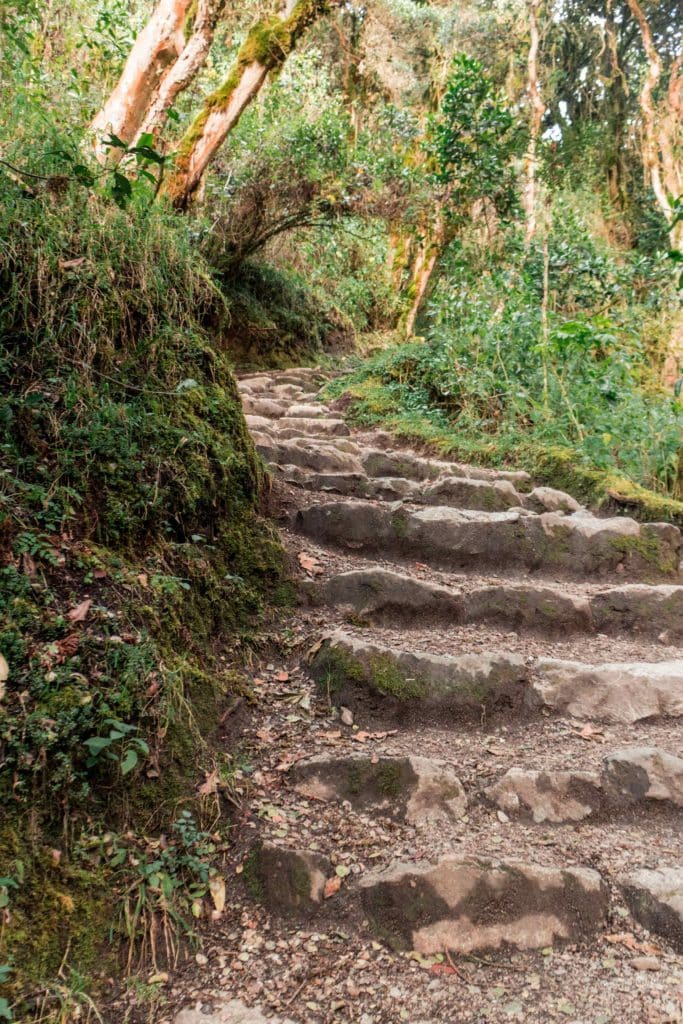
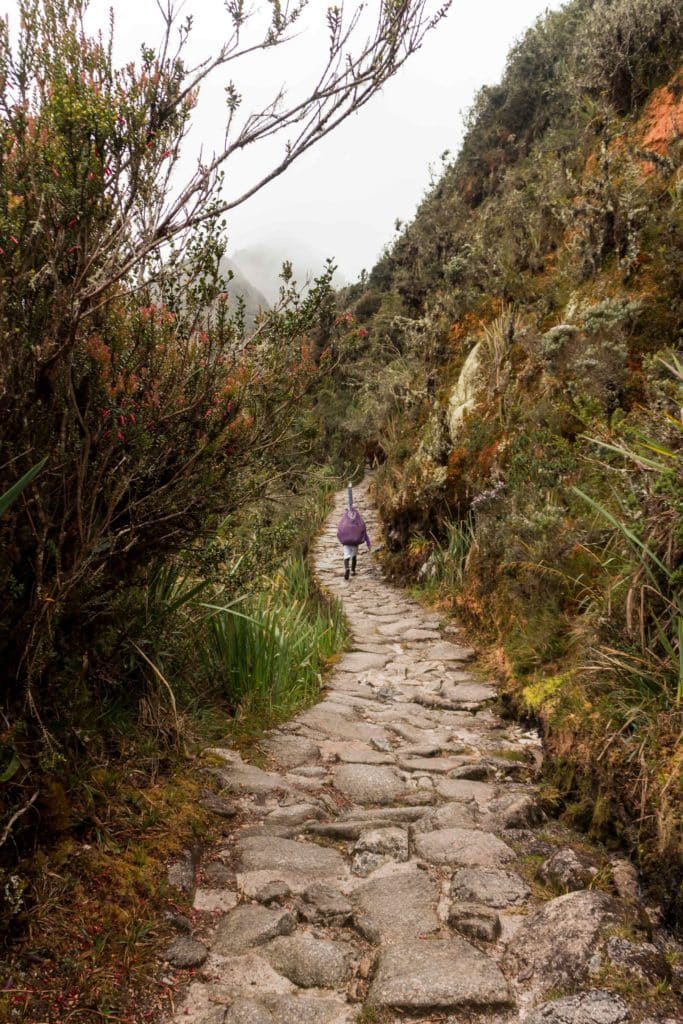
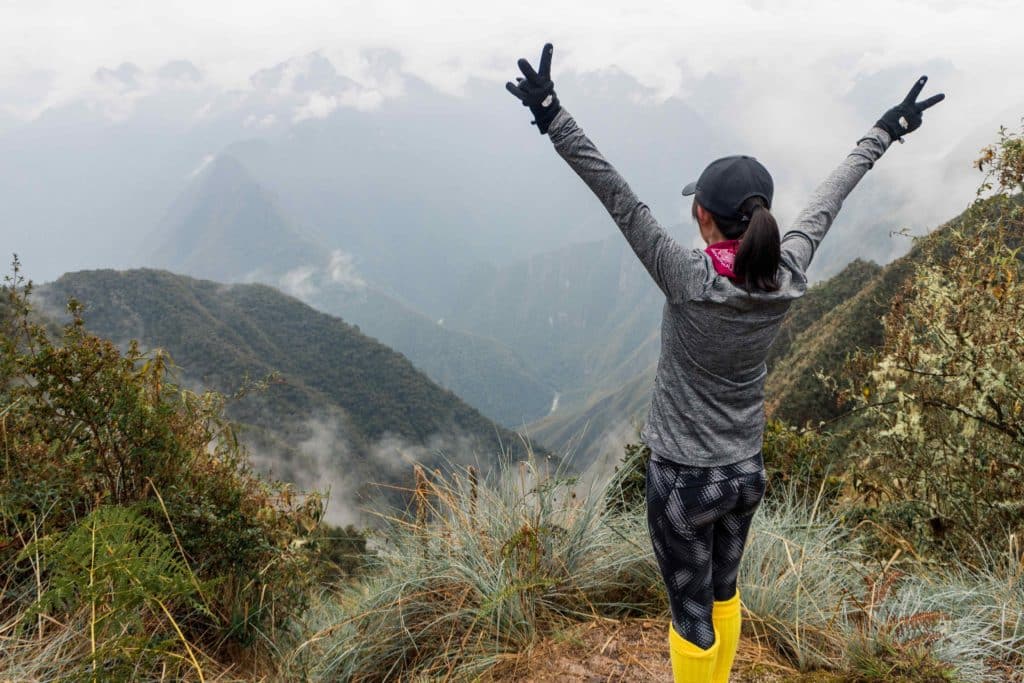
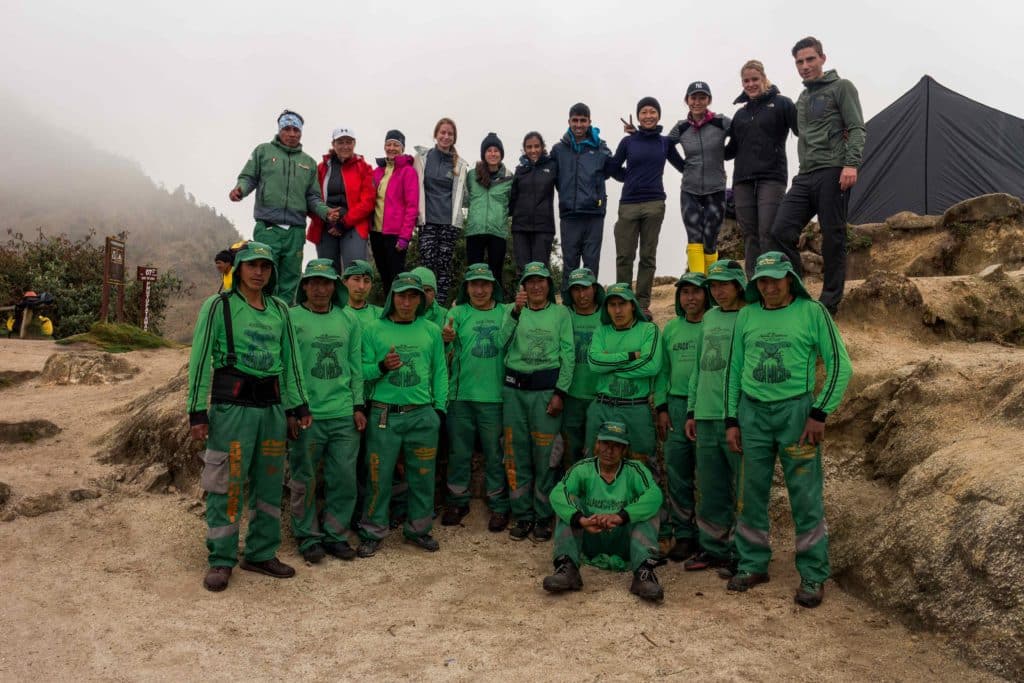
We stopped by some Inca ruins and tunnels while battling bugs (apparently these bugs only appear in the month of August and September). There were definitely steep parts of downhill but overall a relatively easy day. Along the way you also pass by some cool ruins like the one below.


After arriving at day 3 camp at about 1pm for lunch, we saw these cute llamas and started trying to take selfies with them. They seem to really dislike having cameras pointed at them though.
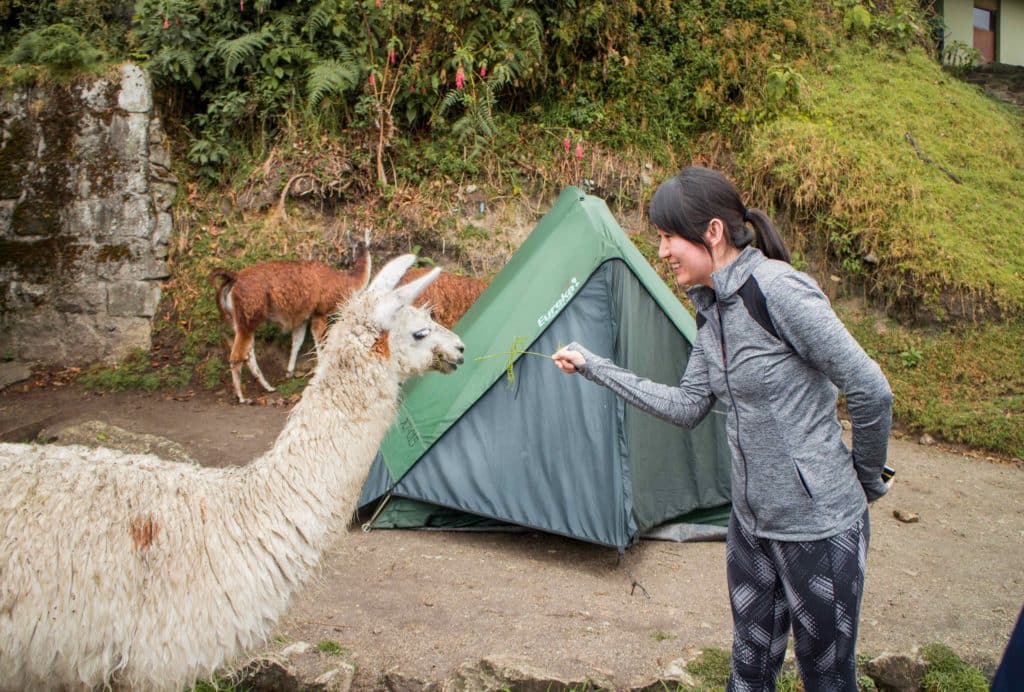
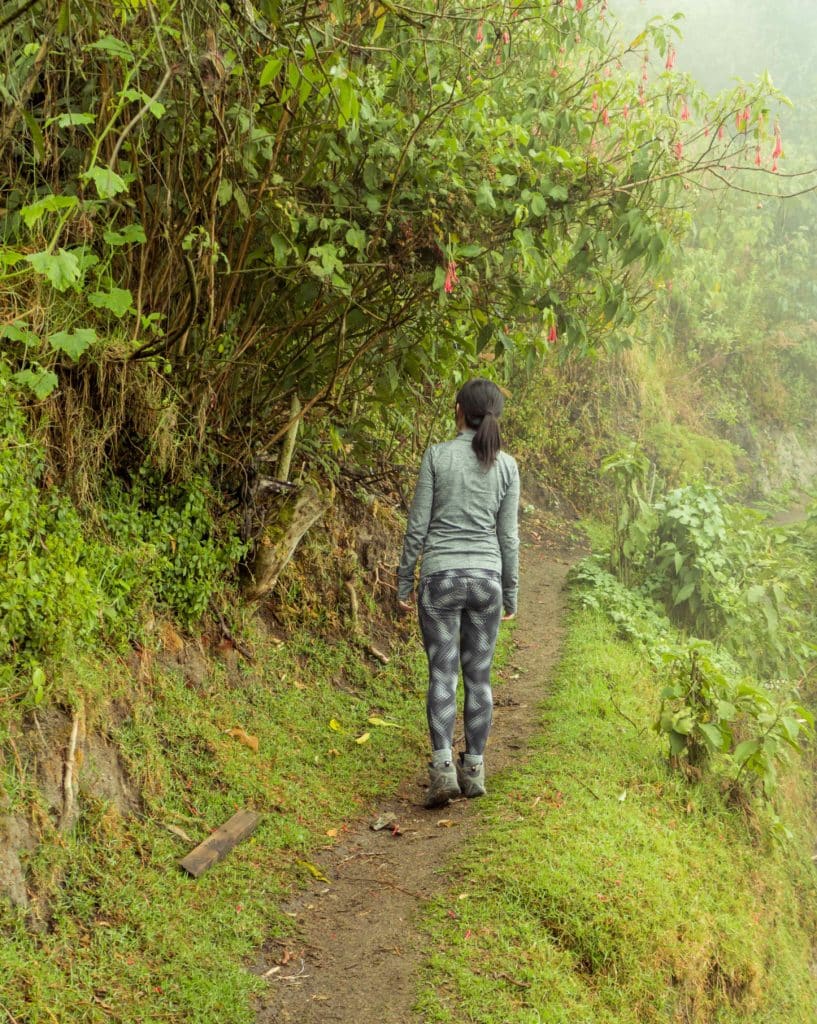
After 2 hours of nap time the day finally cleared up and the view of our tent was amazing! We even had time to explore this ruin called the Mini Machu Picchu (Winaywayna) 5 minutes from our tent.

What’s amazing about the Inca Trail is that you will be the only ones who get to explore these Inca ruins and learn about them.
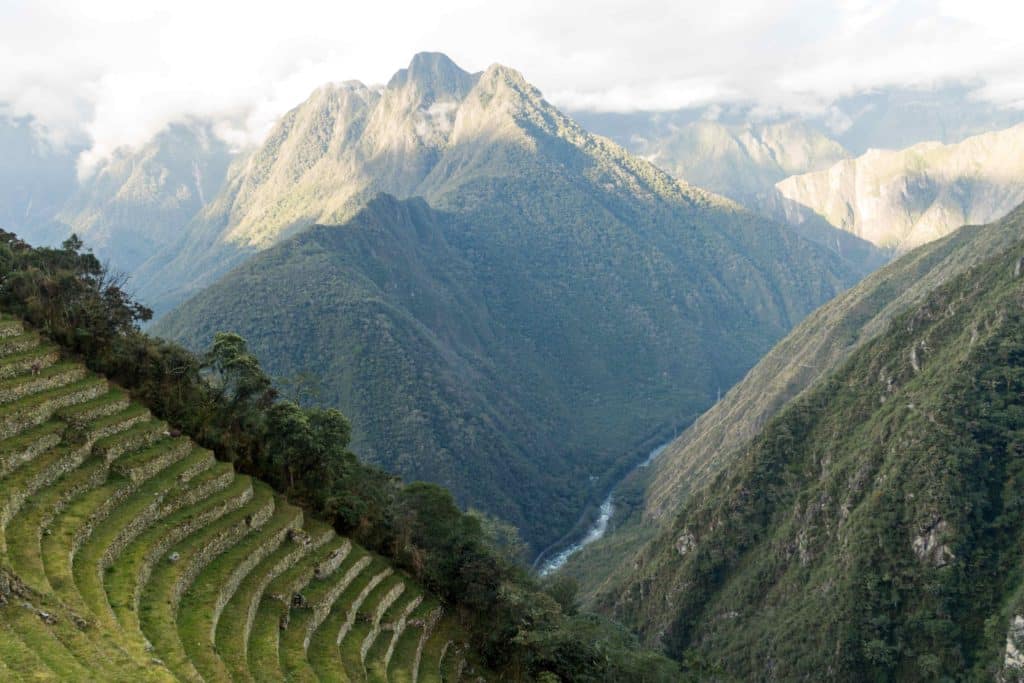
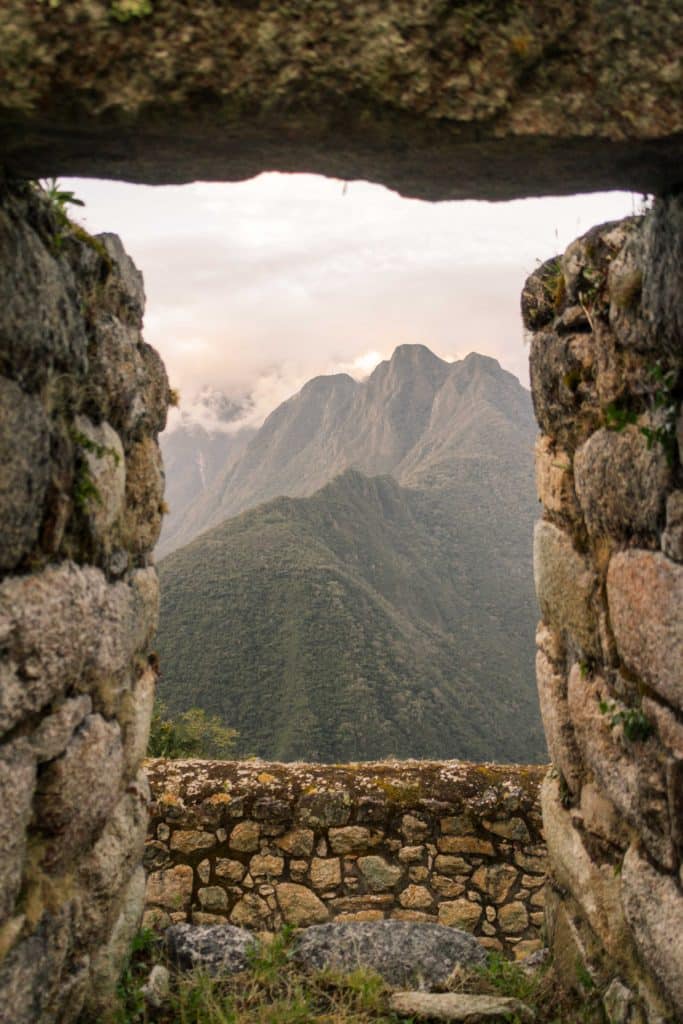
Also during Day 3 of the Inca Trail, there is a cold shower and bathroom next to our tent, but nobody from our group bothered with the cold shower since it was so cold and we were only one day away from the real shower and beds.

Our guides and chef from Alpaca Expedition prepared a surprise for us during dinner! I will not spoil it but it was amazing how creative people are in extreme circumstances! Also during dinner the guides talked to us about tipping our porters and themselves.
One word about the porters on the Inca Trail
I don’t think most people talk about it in their blogs but it’s important to me to discuss the real heroes on the trek – our porters
During the Inca Trail, I was really surprised at how much weight porters need to carry for us. On top of our 7kg of personal belongings including tents and sleeping bags, they also have to carry all the raw cooking materials, gas tanks, tables and chairs, and portable toilets.
Regulation says porters can only carry up to 25kg but I’m sure they carry more than that in reality. If someone’s sick or injured or simply not feeling well, the porters will end up carrying that person’s daypack as well.
They often don’t have nice shoes either, yet they are running up and down hills really fast and probably not in the safest way.
One may think that the cost of Inca Trail may be a lot, but it actually covers the train ride, bus ride, permit for ourselves and our porters/guides, food, Machu Picchu ticket, etc. in the end there’s really not much left to actually pay the porters’ salaries.
So tips are really important to them. That’s why I want to advocate tipping the porters more because their jobs are really hard and dangerous and they get treated unfairly.
On the last day of trekking to Inca Trail, Porters need to pack up and run downhill to catch their train at 5am. If they miss their train they either have to walk hours to the next stop or wait literally a day for the next train (with potentially no seats).
So please tip them more as the money is probably worth a lot more to them than to you if you are able to spend thousands of dollars on a trip.
Day 4 of 4 Day Inca Trail – Machu Picchu
Everyone was excited to finally reach Machu Picchu on Day 4 but first we had to get up at 3am to wait at the gate of the Guard House till 5:30 am when the rangers opened the gate.
Since there are only so many covered seating at the gate, our guides advocated getting there as early as possible so we have a place to sit under a cover in case it rains.
At 5:30am the gate opened and everyone literally powered walked/ran uphill for an hour to the Sun Gate. The last part of this uphill race was called Gringo Killer steps, where you have to use your hands and scramble up the rocks. But after that you are at Sun Gate!

The Sun Gate is significant because it’s the first place you see Machu Picchu from the Inca trail.
It also used to be guarded by the imperial guards so only the worthy could enter Machu Picchu. Supposedly it’s magical if you can see sunrise from Machu Picchu but I think the sunrise only aligns with the Sun Gate one day during the year.
Having started early means we were able to get some shots of the Sun Gate and Machu Picchu before it got really crowded with other trekkers.
After that it was a breezy 45 min gradual downhill to Machu Picchu. Like I mentioned earlier, you will not be the first ones at Machu Picchu as the train riders can get there hours before you.
Our guide from Alpaca Expedition helped us take the obligatory Machu Picchu before we had to leave Machu Picchu and wait outside.
We were able to use a real bathroom (with toilet paper), get our passport stamped with the Machu Picchu stamp, eat and drink before re-entering Machu Picchu for a private tour. The Machu Picchu ticket also allows you to re-enter twice the same day.
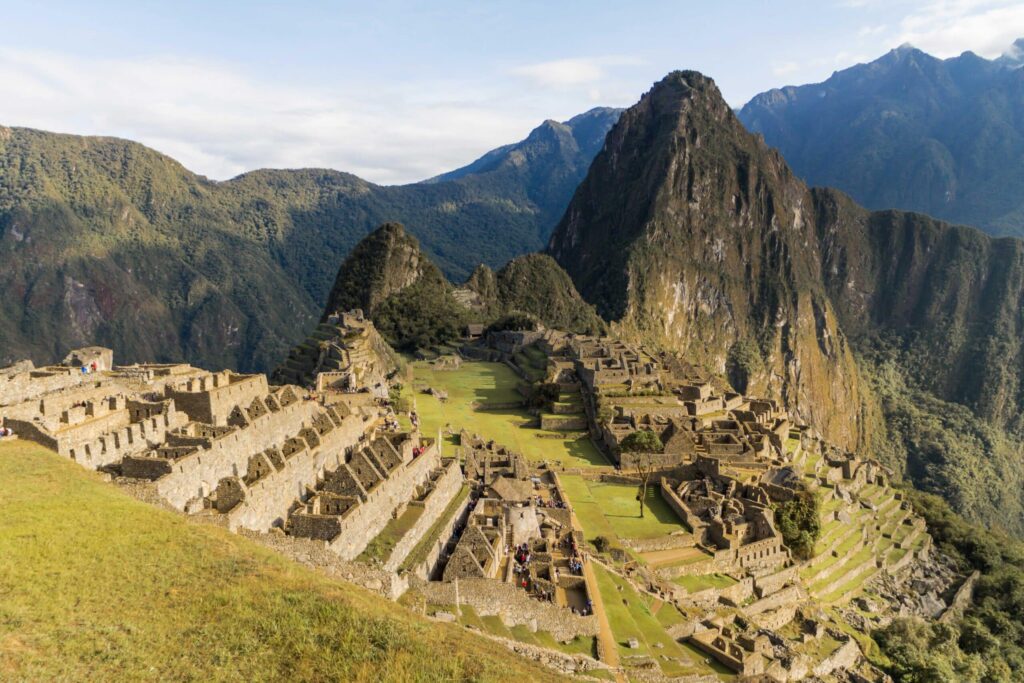
Honestly after the 4 day trekking on the Inca Trail we were all too exhausted to really care about Machu Picchu.
It merely symbolized an end point of an amazing journey but it was far from the highlight and destination of the trip as it is for many tourists. It was great to learn more about the history of Machu Picchu but everyone was dying to shower and go home.

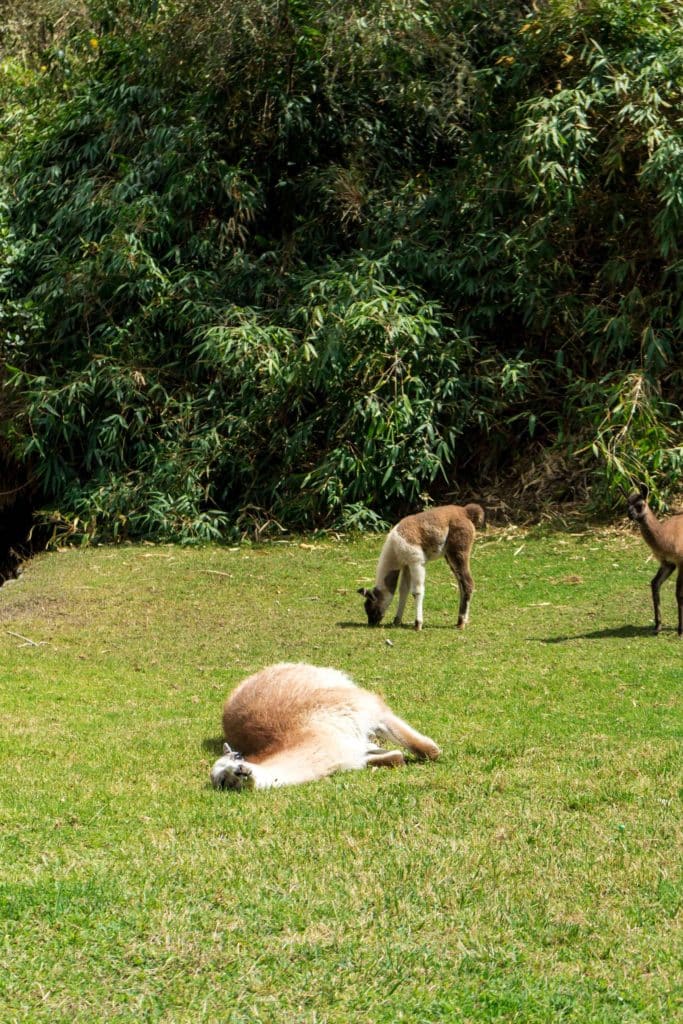
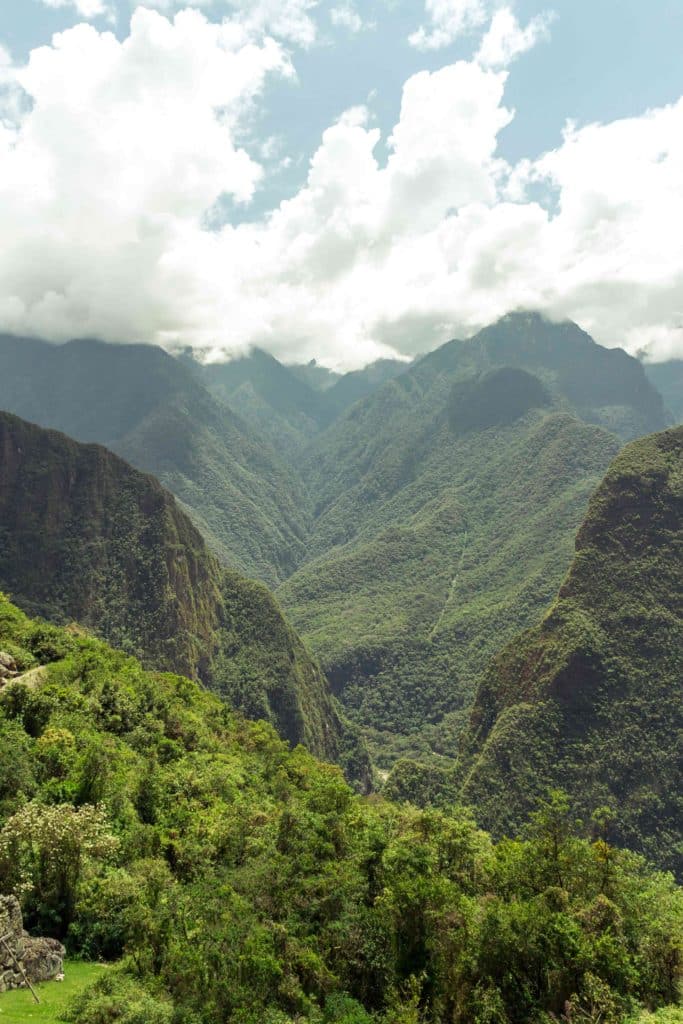
After the Machu Picchu tour we took the bus down to Aguas Calientes for lunch before taking the luxury train back. There are hot springs and massage places in Aguas Calientes, as well as many restaurants, shops, and cafes with Wifi!
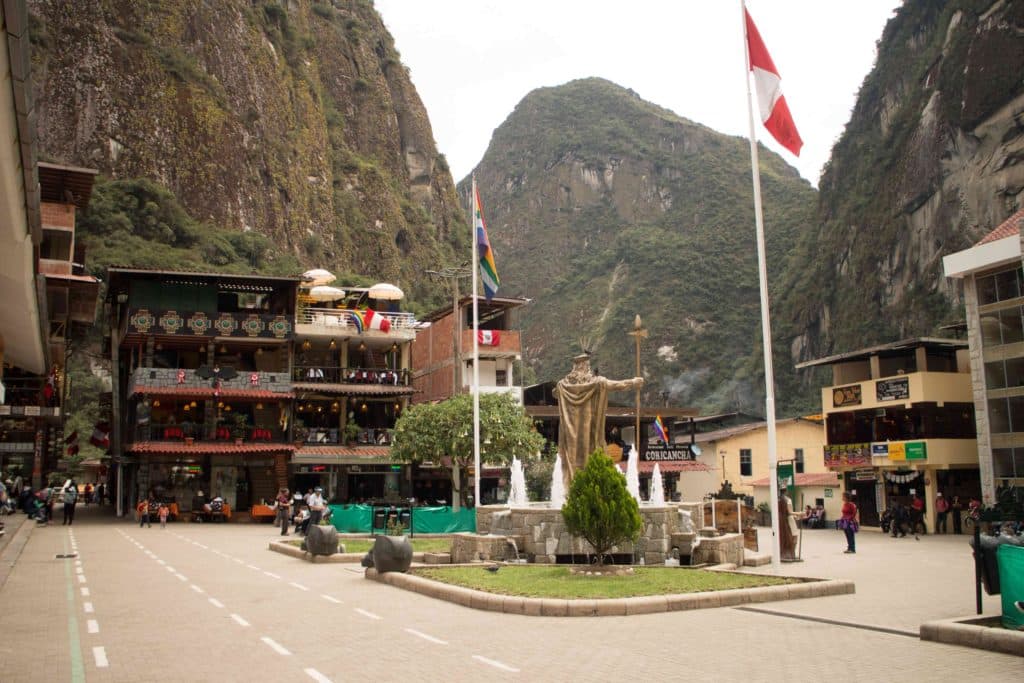
It’s a good place to buy souvenirs and just chill before the 2 hour train ride to Ollantaytambo (then another 2 hour bus ride to Cusco). The Machu Picchu train ride itself was luxurious and has see-through roof.
It was interesting to look up at the mountains and wonder which one we hiked down from. The train ride also includes tea/coffee/water and snacks. Unfortunately there was no wifi.


Can you do the Inca Trail if you are not fit?
Of course the more fit you are the easier it is to hike the Inca Trail but I saw many unfit people on the trail.
If you are not that fit, you can always take it slow but most people still make it eventually.
The only time I would advise against doing the Inca Trail is if you have very bad reactions to high altitude or if you have certain medical problems especially heart disease or lung disease that would make your altitude sickness worse.
Is the Inca Trail worth it?
A lot of visitors are only interested in visiting Machu Picchu and having a train and bus available has made it very convenient for tourists to visit. Many do not realize that the Inca Trail is just as beautiful as Machu Picchu.
Along the hike to Machu Picchu, one will pass by various landscapes including rain forests, settlements, Inca archaeological sites, cloud forests, and alpine tundra.
I was very amazed at the ever changing landscape and the various ruins that are only accessible via the Inca Trail.
After spending 3 days on the trail, Machu Picchu was no longer the highlight of the trip. If you are remotely considering doing the Inca Trail, I highly encourage you to do so because you will be amazed both at the views and what your body can do.
Final Thoughts on 4 Day Inca Trail Trek
The 4 day Inca Trail was definitely not an easy trek but I’m glad I did it. I believe that everyone with a reasonable fitness level and determination can do it. I saw so many amazing things and the stunning landscape on the trail that I would have not seen if I didn’t do the trek.
OTHER PERU TRAVEL RESOURCES
To help you plan your Peru Trip, here are some other Peru blogs you can check out:
- How to Pack and Prepare for the Inca trail
- Rainbow Mountain Hiking Guide
- 2 Week Peru and Bolivia Itinerary
- Sacred Valley Tour From Cusco
Like this post? Pin this Machu Picchu Guide to Pinterest!


